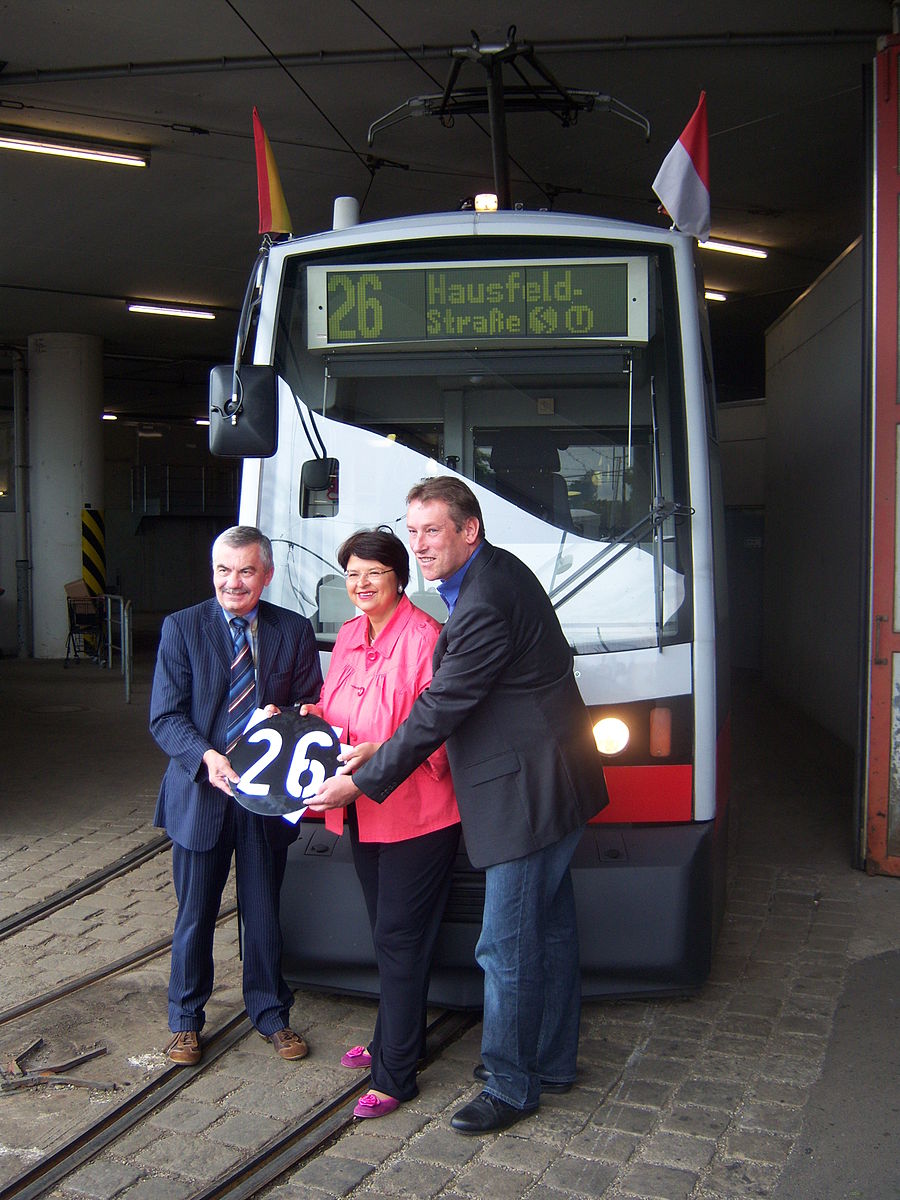Norbert Scheed Forest
The Norbert Scheed Forest is was resolved by April 2015 project in the 22nd Viennese district Donaustadt . It is a recreational space that is an extension of Vienna's green belt and is intended to extend primarily in the area of the Breitenlee and Essling districts . The namesake is the former district chairman Norbert Scheed , on whose idea the project goes back. The area should be around a thousand hectares .
Planning and reflection
The main part of the area is supposed to extend in a ribbon-like manner from Aspern via Breitenlee to the northwest, the central area is formed by the Breitenlee marshalling yard , which has been closed since the 1920s, and its partially still existing track connection to the Laaer Ostbahn . A biotope consisting of dry grass and natural wood has already formed there, which is to be seen as the core of the project.
The first reforestation took place on Telefonweg in Essling in October 2014. A concept for the area was decided in April 2015. On June 15, 2015, a Donaustadt landscape protection area was defined, which also included the project area. However, there is no specific time schedule for implementation, it is spoken of a project of the century .
In 1905 the green belt was defined around the then city, mainly the Vienna Woods in the north-west contributed to it. With the Lobau , the city also has extensive green areas in the southeast. The Norbert-Scheed-Wald is supposed to be a kind of counterpart to these recreational areas in the northeast of the city (hence the name Wienerwald Nordost or Second Vienna Woods ). At the same time, it should represent a link between Bisamberg and Lobau and thus close the green belt around Vienna, at least to some extent. The Danube city is a rapidly growing and urbanizing district, on the other hand it has always had comparatively large undeveloped areas, which are largely used for agriculture. Immediately south of the planned recreation area is the Seestadt Aspern , one of the most important urban development areas of the 2010s, which as a new district forms a conceptual counterpart. As an approximate boundary between these projects, acts Marchegger Eastern Railway , the station Aspern North is provided as an important connection point to public transport.
Despite the name, no complete afforestation of the entire area is planned, selective forest coverings and strips of wood are to frame steppes, meadows, fields and bodies of water and create new green corridors. Since it naturally forms part of the Marchfeld , the steppe areas in particular play an essential role. Agriculture is also to be preserved in the area, not least because about four fifths of the area is privately owned. In the run-up to the project, it was mainly the farmers in the area who viewed him with skepticism. The bodies of water, mostly former gravel ponds, should also play an important role.
Web links
Individual evidence
- ^ Norbert-Scheed-Wald (City of Vienna)
- ↑ Ordinance of the Viennese provincial government regarding the declaration of parts of the 22nd district of Vienna as a landscape protection area (landscape protection area Donaustadt). In: Federal legal information system. June 15, 2015, accessed November 27, 2018 .
- ↑ Second "Wienerwald": Some questions unanswered. In: wien.orf.at. March 7, 2015, accessed November 27, 2018 .
- ↑ City wants the second Vienna Woods. In: wien.orf.at. August 15, 2013, accessed November 27, 2018 .
Coordinates: 48 ° 15 '23 " N , 16 ° 32' 5.9" E


